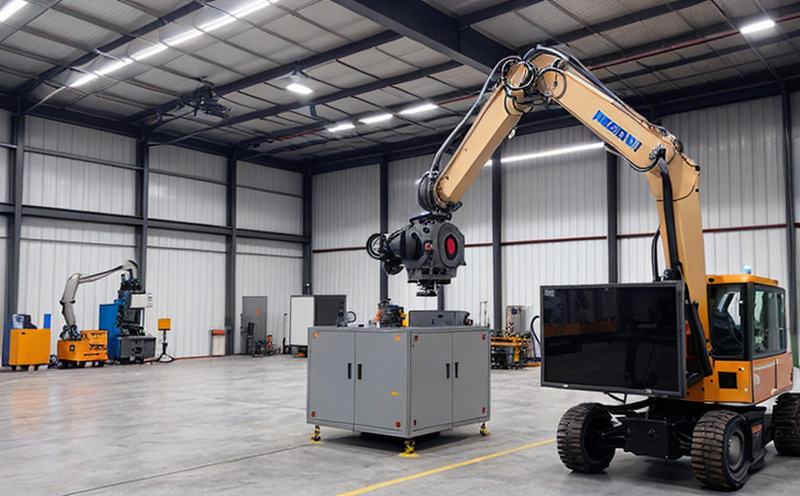ASTM F3217 Real-Time Control Response in Industrial Robots
The ASTM F3217 standard is a critical benchmark for testing real-time control response in industrial robots. This service ensures that robotic systems meet the high standards required for precision and reliability in manufacturing processes.
In industrial settings, the performance of robotics can greatly influence productivity, safety, and overall efficiency. The ASTM F3217 test evaluates how quickly a robot system can respond to commands while maintaining accuracy and stability under real-time conditions. This is particularly crucial in sectors like automotive, electronics, and food processing, where precision and speed are paramount.
The testing process involves simulating various scenarios that the robotic arm might encounter on a production floor. These tests cover a range of parameters including response time, repeatability, accuracy, and safety features. The specimens used for this test are typically the robotic arms themselves or components thereof, depending on the specific requirements.
Instrumentation plays a key role in ASTM F3217 testing. High-precision sensors and data loggers capture real-time performance metrics. These include the time taken to execute commands, deviation from expected positions, and energy consumption during operation.
The results of these tests are meticulously documented and reported. Compliance with the ASTM F3217 standard ensures that robotic systems are not only efficient but also safe for use in human-robot collaboration environments. This service is invaluable for quality managers who need to ensure their systems meet industry standards, compliance officers looking to avoid legal pitfalls, and R&D engineers aiming to optimize system performance.
In summary, ASTM F3217 testing is essential for industrial robots operating in high-stakes manufacturing environments. It guarantees that the robotic systems are reliable, safe, and capable of meeting stringent performance criteria.
Applied Standards
The ASTM F3217 standard is widely recognized for its rigorous testing protocols in evaluating real-time control response in industrial robots. This standard ensures that robotic systems meet the highest levels of accuracy and efficiency, which are crucial in industries like automotive manufacturing, electronics production, and food processing.
- ASTM F3217-20: Real-Time Control Response in Industrial Robots
- ISO 9469:2015: General requirements for programmable industrial robots
- EN ISO 9283:2010: Safety of machinery - Requirements concerning the safety of robotic devices
The ASTM F3217 standard specifically addresses real-time control response, which is a critical aspect in ensuring that industrial robots can operate with precision and reliability. This standard ensures that the robotic systems are not only efficient but also safe for use in human-robot collaboration environments.
Benefits
- Increased Efficiency: Ensures that industrial robots perform optimally, reducing downtime and increasing productivity.
- Better Safety: By meeting stringent control response standards, the risk of accidents is minimized in human-robot collaboration environments.
- Compliance Assurance: Compliance with ASTM F3217 ensures that robotic systems meet industry regulations and avoid legal issues.
- R&D Optimization: The detailed testing provided by this service helps R&D teams optimize system performance, leading to innovative solutions.
Environmental and Sustainability Contributions
- Energy Efficiency: By ensuring that industrial robots operate at their peak efficiency, the ASTM F3217 standard helps reduce energy consumption in manufacturing processes.
- Material Conservation: Optimized robot systems can perform tasks more accurately and efficiently, leading to reduced waste in production processes.
- Safety Enhancements: Safer robotic operations contribute to a reduction in environmental impact by minimizing the need for corrective actions that could lead to material waste or energy inefficiency.
The ASTM F3217 standard plays a vital role in promoting sustainability within industrial environments. By ensuring that robots operate efficiently and safely, it helps manufacturers reduce their carbon footprint and contribute positively to environmental conservation efforts.





